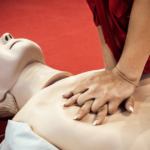Cycling Benefits and Which Cycle is Best

Cycling has become increasingly popular as a form of exercise and transportation, attracting people of all ages and fitness levels. What makes cycling so appealing? Well, there are several factors that contribute to its widespread popularity:
Factors Contributing to the Popularity of Cycling
- Accessibility: Cycling is a relatively simple activity that doesn’t require any special skills or expensive equipment. All you need is a bike and a willingness to pedal.
- Versatility: Whether you’re cycling to work, running errands, or exploring new trails, cycling offers a versatile mode of transportation. It allows you to navigate through congested city streets or escape into nature on off-road paths.
- Health Benefits: One of the main reasons people turn to cycling is for its numerous health benefits. It provides a full-body workout that engages multiple muscle groups and improves cardiovascular fitness.
In this article, we will delve into the various health benefits of cycling and provide helpful tips for choosing the right cycle for your needs. By the end of this article, you’ll have a greater understanding of why cycling is such an excellent activity for both physical and mental well-being.
The Health Benefits of Cycling
So, what exactly are the benefits of cycling? Let’s explore them in detail:
- Improved Cardiovascular Health: Cycling is a highly effective cardiovascular exercise that strengthens the heart and improves blood circulation. Studies have shown that regular cycling can lower the risk of heart disease, stroke, and high blood pressure.
- Low-Impact Exercise for Joint Health: Unlike high-impact activities like running, cycling is considered a low-impact exercise that puts minimal stress on the joints. This makes it an ideal choice for individuals with joint issues or injuries.
- Weight Management through Cycling: If weight loss or maintenance is your goal, cycling can be an excellent tool. It burns calories and helps boost metabolism, making it easier to achieve your desired weight.
- Prevention of Chronic Diseases: Cycling has been linked to a reduced risk of chronic conditions such as heart disease, diabetes, and certain types of cancer. It can improve insulin sensitivity and reduce inflammation, both of which play key roles in disease prevention.
- Strengthening Leg Muscles and Enhancing Balance: Cycling primarily targets the muscles in the lower body, including the quadriceps, hamstrings, and calves. Additionally, the need to maintain stability on a moving bike improves balance and coordination.
- Boosting Mental Well-Being: Cycling has a positive impact on mental health by reducing stress levels and improving mood through the release of endorphins. Many individuals have reported experiencing increased happiness and reduced anxiety after incorporating cycling into their routine.
In the next sections, we will delve deeper into each of these benefits and provide you with practical tips on maximizing your cycling experience. But first, let’s explore how to choose the right cycle for your needs.
1. Improved Cardiovascular Health
Cycling is a great way to exercise and improve your cardiovascular health. It has been proven to have several benefits for your heart and overall cardiovascular fitness.
The Benefits of Cycling for Your Heart
Studies have shown that cycling can:
- Lower the risk of heart disease
- Reduce the chance of having a stroke
- Improve blood circulation
- Strengthen the heart muscle
How to Get the Most Out of Cycling for Your Heart
To maximize the cardiovascular benefits of cycling, here are some tips:
1. Set Realistic Goals
Gradually increase the duration and intensity of your rides to challenge your cardiovascular system over time.
2. Vary Your Routes
Incorporate different terrains and inclines into your rides to provide a varied cardiovascular workout.
3. Monitor Your Heart Rate
Use a heart rate monitor to ensure you’re working within an appropriate target heart rate zone for optimal cardiovascular conditioning.
4. Stay Hydrated
Proper hydration is essential for maintaining cardiovascular health during exercise. Drink plenty of water before, during, and after your rides.
5. Listen to Your Body
Pay attention to how your body feels during each ride. If you experience any chest pain or discomfort, shortness of breath, or dizziness, stop cycling and seek medical attention if necessary.
Consult with Your Healthcare Provider Before Starting
Before starting any new exercise program, it’s always a good idea to consult with your healthcare provider, especially if you have any underlying health conditions or concerns.
By following these tips and making cycling a regular part of your fitness routine, you can enjoy improved cardiovascular health and reap the many benefits that come with it.
2. Low-Impact Exercise for Joint Health
Cycling is a gentle exercise that doesn’t put a lot of strain on your joints, which makes it great for people with joint problems or injuries. When you ride a bike, the smooth, circular motion of pedaling helps build up the muscles around your knees and hips without putting too much pressure on your joints like running does.
Benefits of Cycling for Your Joints
- Less Stress on Your Joints: Unlike activities like running or high-impact aerobics, cycling doesn’t put as much weight on your weight-bearing joints, such as your knees and hips. That’s why it can be a good exercise option if you have arthritis or if you’re recovering from a joint injury.
- More Movement in Your Joints: Regular cycling can improve how flexible and mobile your joints are, which is important for keeping them healthy and preventing stiffness.
Stories from Real People
A lot of people have found that cycling regularly has made a big difference in their joint pain and how well they can move. For example:
- Jane started riding her bike regularly and after a few months, she noticed that her knees didn’t hurt as much and she could bend them more easily.
- John had been dealing with hip pain because of arthritis, but he found that cycling was something he could do without making his hip pain worse.
Adding cycling to your workout routine can be a helpful way to take care of your joints and deal with conditions like arthritis. It gives you a chance to get some cardio exercise without putting too much strain on your joints, so it’s a good choice if you want to improve your overall fitness but you’re worried about hurting your joints.
3. Weight Management through Cycling
Cycling can be a highly effective component of a weight management plan, offering numerous benefits for individuals looking to lose weight or maintain a healthy weight. Here are some key points to consider:
- Burning Calories: Cycling is an excellent way to burn calories, making it an efficient form of exercise for weight management. The number of calories burned during a cycling session can vary based on factors such as intensity, duration, and terrain. For example, a leisurely bike ride may burn fewer calories than a high-intensity cycling workout or uphill ride.
- Boosting Metabolism: Regular cycling can help boost your metabolism, leading to increased calorie expenditure even when at rest. This can contribute to overall weight management by helping individuals maintain a healthy balance of calorie intake and expenditure.
- Comprehensive Weight Management Plan: To maximize the weight management benefits of cycling, it’s important to combine regular cycling with a balanced and nutritious diet. Cycling alone may not lead to significant weight loss if dietary habits are not addressed. Incorporating other forms of physical activity alongside cycling can also contribute to a well-rounded approach to weight management.
- Variety in Cycling Workouts: To keep your body challenged and continue burning calories effectively, consider incorporating a variety of cycling workouts into your routine. This may include interval training, hill climbs, or group cycling classes that offer diverse challenges and opportunities for calorie burning.
By understanding the role of cycling in weight management and implementing it as part of a holistic approach to health and fitness, individuals can harness the benefits of this enjoyable and accessible form of exercise.
4. How Cycling Can Help Prevent Chronic Diseases
Cycling is a fantastic activity that can have a big impact on reducing the risk of chronic diseases like heart disease, diabetes, and certain types of cancer. Here’s how it works:
1. Improving Your Heart Health
When you cycle regularly, your heart gets stronger and healthier. This helps improve blood flow and lowers your blood pressure, which are key factors in preventing heart disease. By keeping your heart in good shape, cycling reduces the chances of developing heart-related problems.
2. Managing Your Blood Sugar Levels
Cycling also has a positive effect on your body’s ability to use insulin, a hormone that helps regulate blood sugar levels. By being physically active through activities like cycling, you can improve how your body responds to insulin and keep your blood glucose levels stable. This is especially important if you’re at risk of developing diabetes due to family history or other factors.
3. Lowering Your Cancer Risk
While the exact reasons aren’t fully understood yet, studies have shown that regular physical activity, including cycling, is linked to a lower risk of certain cancers like colon, breast, and lung cancer. It’s believed that being active helps boost your immune system, reduce inflammation, and enhance processes that repair damaged DNA – all of which play a role in preventing cancer.
4. Boosting Your Mental Well-being
It’s not just your physical health that benefits from cycling – your mental well-being gets a boost too! When you exercise, your brain releases chemicals called endorphins that make you feel happier and more relaxed. This natural mood-lifter can help reduce stress and improve your overall mental health.
How Much Cycling Should You Do?
To get the most out of cycling for preventing chronic diseases, try to incorporate regular moderate-intensity cycling into your routine. Here’s a guideline to follow:
- Aim for at least 150 minutes of moderate-intensity aerobic activity, like cycling, per week.
- You can break this down into shorter sessions throughout the week – for example, 30 minutes of cycling five days a week.
- If you’re new to cycling or have any health concerns, it’s always a good idea to consult with your doctor before starting any exercise program.
Tips for Making Cycling More Fun
To make cycling a sustainable habit, here are some tips:
- Join a local cycling group or club – it’s a great way to meet new people and stay motivated.
- Find a cycling buddy – having someone to ride with can make the activity more enjoyable.
- Explore new routes and trails – variety can keep things interesting and prevent boredom.
- Consider using a fitness tracker or app to keep track of your progress – seeing your improvements over time can be very motivating.
Remember, always prioritize safety when cycling. Wear a helmet, follow traffic rules, and use bike lights when riding in low-light conditions.
Cycling is an excellent choice for staying active and protecting yourself against chronic diseases. By taking care of your heart, managing blood sugar levels, reducing cancer risk, and boosting your mental well-being, you’ll be on the right path towards long-term health. So hop on your bike and start pedaling!
5. Strengthening Leg Muscles and Enhancing Balance
Cycling is a great way to strengthen your leg muscles and improve your balance. Here’s why:
How Cycling Helps with Leg Muscle Strength
- Cycling mainly works the muscles in your lower body, such as your quadriceps (thigh muscles), hamstrings (back of the thigh), and calves.
- When you pedal, these muscles contract and relax repeatedly, which helps build strength and endurance over time.
The Benefits of Cycling for Balance and Coordination
- Riding a bike requires you to stay upright and steady, especially when you’re going at different speeds or on uneven surfaces.
- This constant adjustment helps improve your coordination skills and overall balance.
By regularly cycling, you can see significant improvements in your leg muscle strength, endurance, and overall lower body fitness. Plus, the better balance and coordination you gain from cycling can also help you with everyday activities.
“I used to have weak legs and poor balance, but ever since I started cycling regularly, I’ve noticed a big difference. Now I feel more stable on my feet and have stronger legs!” – Sarah, avid cyclist
Cycling is a low-impact exercise that puts less stress on your joints compared to activities like running. So it’s a great option for people of all fitness levels who want to work on their leg strength and balance.
Ready to explore how cycling can benefit your mental well-being? Keep reading!
6. Boosting Mental Well-Being through Cycling
Cycling not only has physical benefits but also offers numerous mental health benefits. Engaging in regular cycling can have a positive impact on your mental well-being, helping to reduce stress levels and improve mood. Here are some key points to consider:
Stress Reduction
Cycling is an excellent way to relieve stress and clear your mind. When you pedal, your body releases endorphins, which are natural mood enhancers. These endorphins help to alleviate stress and promote feelings of happiness and relaxation.
“I used to struggle with stress and anxiety, but ever since I started cycling regularly, I’ve noticed a significant improvement in my mental well-being. The combination of fresh air, exercise, and the rhythmic motion of pedaling helps me feel more calm and centered.” – Sarah, avid cyclist.
Improved Mood
Regular cycling has been shown to boost overall mood and combat feelings of depression. The combination of physical activity and being outdoors can have a positive effect on your mental state, leaving you feeling happier and more content.
“There’s something about being out in nature and feeling the wind on my face as I cycle that instantly lifts my mood. It’s like therapy on two wheels!” – Mark, passionate cyclist.
Enhanced Cognitive Function
Cycling not only benefits your physical fitness but also improves cognitive function. Studies have shown that regular aerobic exercise, such as cycling, can enhance memory, attention span, and problem-solving skills.
Social Interaction
Cycling can be a social activity that allows you to connect with others who share the same interest. Joining a cycling group or participating in organized rides provides opportunities for social interaction, which can help combat feelings of loneliness or isolation.
“Cycling has introduced me to a wonderful community of like-minded individuals. We support each other, share our experiences, and enjoy great conversations both on and off the bike. It’s been a fantastic way to make new friends and feel a sense of belonging.” – Lisa, cyclist and group ride enthusiast.
By incorporating cycling into your routine, you can experience these mental health benefits while simultaneously improving your physical fitness. So, why not hop on your bike and start reaping the rewards for both your body and mind?
Remember, choosing the right bike that suits your needs is essential for a comfortable and enjoyable riding experience.
Choosing the Right Cycle: Factors to Consider
When it comes to choosing a cycle, it’s essential to consider several factors to ensure that you select the most suitable bike for your intended use and body type. This not only enhances your comfort but also helps prevent potential injuries. Here are some key considerations to keep in mind when selecting a bike:
Intended Use
Evaluate the type of cycling you plan to do, whether it’s road biking, mountain biking, or casual rides around the neighborhood. Different types of bikes are designed for specific purposes, so understanding your primary use is crucial.
Body Type and Fit
Ensure that the bike fits your body properly to prevent discomfort and strain. Factors such as frame size, saddle height, and handlebar position play a significant role in achieving a comfortable fit.
Frame Material
The material of the bike frame impacts its weight, durability, and ride quality. Common materials include aluminum, steel, carbon fiber, and titanium, each offering distinct characteristics.
By carefully considering these factors and conducting thorough research on different bike options, you can make an informed decision that aligns with your cycling goals and physical requirements. Remember that choosing the right bike contributes significantly to a more enjoyable and rewarding cycling experience.
The Best Cycles for Different Purposes
When it comes to choosing the best cycle for your specific needs, it’s essential to consider the distinct advantages of different types of bikes. Here, we’ll explore two popular options: road bikes and indoor cycling bikes.
Road Bikes
Road bikes are designed for speed and efficiency on paved surfaces, making them ideal for fitness enthusiasts and competitive riders. They offer the following benefits:
- Speed and Efficiency: With their lightweight frames and narrow tires, road bikes offer minimal rolling resistance, allowing riders to cover long distances with less effort.
- Aerodynamics: The aerodynamic positioning on a road bike also helps reduce wind resistance, further enhancing speed and performance.
- Suitable for Long Road Rides: These bikes are perfect for those who enjoy long road rides or participating in road cycling events.
Indoor Cycling Bikes
Indoor cycling bikes, such as spin bikes, cater to individuals who prefer exercising at home or in a group class setting. They provide the following advantages:
- Convenience: These stationary bikes allow you to work out anytime without the need to venture outdoors.
- Effective Cardiovascular Workout: Indoor cycling classes often feature high-energy routines set to music, creating a motivating and immersive exercise experience.
- Consistent Workout Environment: For those seeking convenience and a consistent workout environment, indoor cycling bikes offer a compelling option.
By understanding the unique benefits of road bikes and indoor cycling bikes, you can make an informed decision based on your fitness goals and lifestyle preferences. Whether you crave the thrill of outdoor speed or the convenience of indoor workouts, there’s a cycle tailored to meet your specific needs.
Staying Safe on the Road: Essential Cycling Safety Tips
When it comes to cycling, safety should always be a top priority. Whether you’re a seasoned cyclist or just starting out, following these essential cycling safety tips will help ensure a safe and enjoyable ride:
1. Wear a helmet and protective gear
Wearing a helmet is crucial to protect your head in case of a fall or collision. Additionally, consider wearing knee pads, elbow pads, and gloves for added protection.
2. Obey traffic laws
Treat your bike like any other vehicle on the road and follow all traffic laws. This includes stopping at red lights and stop signs, signaling your turns, and yielding to pedestrians.
3. Stay visible
Make yourself visible to motorists by wearing brightly colored or reflective clothing, especially when riding in low-light conditions or at night. Use front and rear lights on your bike to increase visibility.
4. Choose safe cycling routes
Plan your routes ahead of time and choose roads with designated bike lanes or wide shoulders whenever possible. Avoid busy streets with heavy traffic and consider using dedicated cycling paths or trails.
5. Be aware of potential hazards
Stay vigilant while on the road and watch out for potential hazards such as potholes, debris, parked cars opening their doors, or unpredictable behavior from pedestrians or other cyclists.
6. Maintain your bike
Regularly inspect your bike for any signs of wear or damage, such as worn-out brake pads or loose bolts. Keep your tires properly inflated and ensure that all components are in good working condition.
By following these essential cycling safety tips, you can minimize the risk of accidents and enjoy a safe ride every time you hop on your bike. Remember that safety is paramount, so always prioritize protective gear, obey traffic laws, stay visible, choose safe routes, be aware of hazards, and maintain your bike properly.
Final Thoughts on Cycling Benefits and Bike Selection
Incorporating cycling into your daily routine can be a fun and effective way to improve your physical and mental well-being. With its numerous health benefits, cycling is a versatile activity that can be enjoyed by people of all ages and fitness levels. Whether you’re looking to improve cardiovascular health, manage your weight, strengthen your leg muscles, or boost your mental well-being, cycling offers a wide range of benefits.
Choosing the Right Bike for You
However, it’s important to remember that choosing the right bike is crucial for a comfortable and enjoyable riding experience. Before making a purchase, consider your individual needs and preferences. Factors such as:
- Frame material
- Bike fit
- The type of cycling you plan to do
should be taken into consideration.
Start Your Cycling Journey Today
So why wait? Get on your bike and start reaping the benefits today. Cycling not only improves your physical fitness but also allows you to:
- Explore new places
- Connect with nature
- Enjoy the freedom of the open road
So grab your helmet, find a safe route, and embark on your cycling journey towards better health and happiness.
As the saying goes, “Life is like riding a bicycle. To keep your balance, you must keep moving.” Happy cycling!






